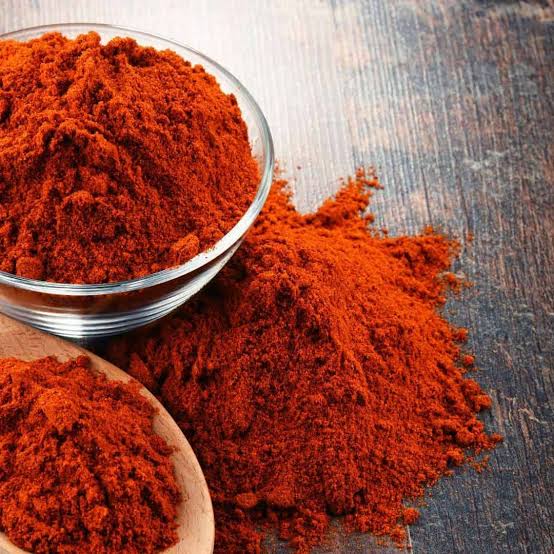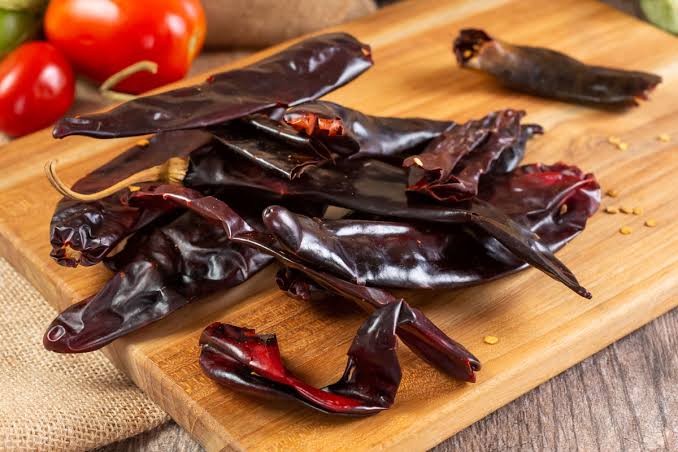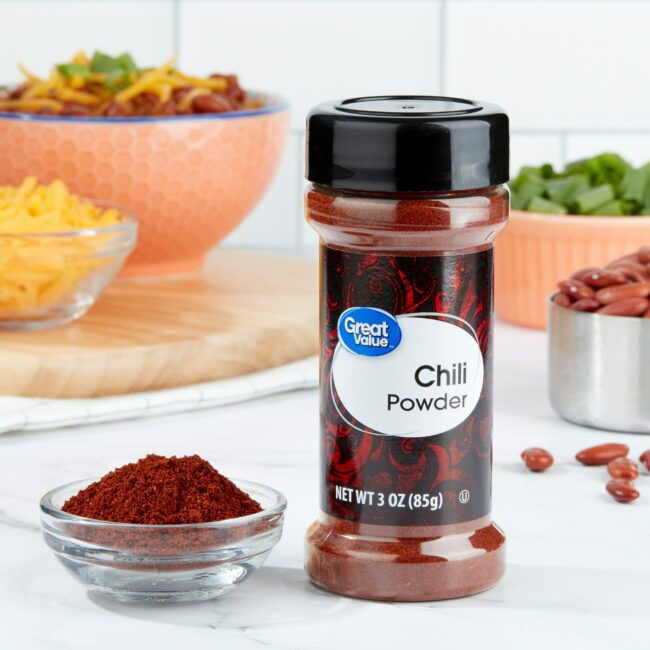Chili seasoning is a very special mix of spices that adds incredible flavor and heat to your favorite dishes. It’s like a secret ingredient that turns ordinary meals into culinary masterpieces. Let’s see why chili Seasoning is so popular and how you can use it to elevate your cooking.
Chili seasoning is a blend of different spices and herbs. The exact composition can vary, but some common ingredients include chili powder, cumin, paprika, garlic powder, onion powder, oregano, and salt. These spices come together to create a symphony of flavors that are spicy, smoky, and savory all at once.
One of the key components of chili seasoning is chili powder. It’s made from dried, ground chili peppers and is responsible for the spicy kick that chili seasoning brings to your dishes. Depending on the type of chili peppers used, the heat level can vary from mild to extremely hot. So, if you prefer your food on the milder side, be sure to check the label for the chili powder’s heat rating.
Cumin is another essential spice in chili seasoning. It adds a warm, earthy flavor that complements the heat of the chili powder. Cumin’s distinctive taste is a hallmark of many Mexican and Tex-Mex dishes.
Paprika, on the other hand, contributes a rich, smoky flavor and a vibrant red color to the seasoning mix. It can be sweet or spicy, depending on the variety used. Smoked paprika, in particular, imparts a delightful smokiness that elevates the overall taste of your dishes.
Garlic powder and onion powder are two more components that enhance the savory depth of chili seasoning. They provide a subtle, aromatic background flavor that pairs beautifully with the other spices.
Oregano adds a Mediterranean twist to chili seasoning. Its herbaceous and slightly bitter notes balance the heat and smokiness, creating a well-rounded flavor profile.
Salt, of course, is a crucial element that not only seasons the dish but also helps bring out the flavors of the other spices. It’s essential to use the right amount of salt to achieve the perfect balance in your seasoning.
Now that we’ve explored the components of chili seasoning, let’s talk about how you can use it in your cooking. The most obvious application is, of course, in chili dishes. Whether you’re making a classic beef chili, a vegetarian chili, or even a chili mac and cheese, chili seasoning is the star of the show. Just sprinkle it in while you’re cooking, tasting along the way to adjust the heat level to your liking.
But chili seasoning is versatile beyond just chili. You can use it to season meats like chicken, pork, or beef before grilling or roasting. It’s also fantastic as a dry rub for barbecue. Sprinkle it on roasted vegetables for a flavorful side dish or mix it into sour cream for a zesty dip.
In addition, chili seasoning is a wonderful blend of spices that can transform ordinary dishes into extraordinary culinary experiences. Its combination of heat, smokiness, and savory flavors makes it a must-have in any kitchen. So, next time you’re looking to spice up your meals, reach for that jar of chili seasoning and let the magic happen. Your taste buds will thank you.
Read Also: Principles of Housing and Sanitation for Rabbits
10 Health Benefits of Chili Seasoning

Chili seasoning not only adds a burst of flavor to your dishes but also offers several potential health benefits. Here are 10 of them:
1. Weight Management: The spiciness of chili seasoning can help increase metabolism and reduce appetite, potentially aiding in weight management.
2. Pain Relief: Capsaicin, found in chili peppers, may have pain-relieving properties and is used in topical creams for conditions like arthritis and muscle pain.
3. Heart Health: Some studies suggest that chili consumption may improve heart health by reducing bad cholesterol levels and improving blood circulation.
4. Boosted Immunity: Chili peppers are rich in vitamin C, which can strengthen the immune system and help the body fight off illnesses.
5. Anti-Inflammatory: The capsaicin in chili peppers may have anti-inflammatory properties, potentially helping with conditions like rheumatoid arthritis.
6. Digestive Health: Spices in chili seasoning, such as cumin, can aid digestion and alleviate symptoms like bloating and indigestion.
7. Antioxidant Properties: Chili peppers contain antioxidants that combat free radicals, potentially reducing the risk of chronic diseases.
8. Pain Management: The heat from chili seasoning may stimulate the release of endorphins, acting as a natural pain reliever.
9. Improved Mood: Capsaicin can trigger the release of “feel-good” hormones like serotonin, potentially improving mood and reducing stress.
10. Cancer Prevention: Some research suggests that capsaicin may have anticancer properties, particularly in inhibiting the growth of certain cancer cells.
It’s important to note that while chili seasoning can offer these potential health benefits, moderation is key. Consuming excessive amounts of chili seasoning can lead to digestive discomfort and may not be suitable for everyone, especially those with certain medical conditions. Always consult with a healthcare professional for personalized dietary advice.
Guajillo Chili

Guajillo chili is a type of pepper that’s famous for its unique taste and versatility in the world of cooking. These chilies have a long and slender shape with a deep red color when ripe. They are popular in Mexican cuisine, where they are used to add flavor and a mild to moderate heat to many dishes. Let’s explore the world of Guajillo chili in simple terms.
Guajillo chilies are known for their rich, fruity flavor with notes of berries and a hint of smokiness. They are not incredibly spicy but provide a gentle warmth that enhances the taste of dishes without overwhelming your taste buds.
In Mexican cooking, Guajillo chilies are often used to make sauces, marinades, and salsas. One of the most famous sauces featuring Guajillo chili is “mole,” a complex and flavorful sauce that can be used to prepare chicken, enchiladas, and more.
To use Guajillo chilies, they are typically dried. You can find them in many grocery stores in this dried form. To prepare them for cooking, you’ll want to remove the seeds and stems, which can be done by slicing the chili open and shaking out the seeds. Then, you can either toast them in a dry pan or soak them in hot water to soften them before blending or cooking.
Guajillo chili can be used in a wide range of dishes. You can create a simple Guajillo chili sauce by blending the rehydrated chilies with other ingredients like tomatoes, garlic, and spices. This sauce can be used as a base for stews, soups, or as a marinade for meats.
Like many chili peppers, Guajillo chilies contain vitamins and antioxidants. They may help with digestion and metabolism due to their mild spiciness. Some studies suggest that consuming chili peppers in moderation may even have heart-healthy benefits.
While Guajillo chilies are not extremely spicy, they can still be too hot for some people. If you’re not used to spicy foods, start with a small amount and taste as you go to ensure the dish doesn’t become too spicy.
Additionally, Guajillo chili is a fantastic ingredient that adds a unique and delightful flavor to a variety of dishes. Its mild to moderate heat level makes it accessible to many, and its versatility in Mexican cuisine ensures it’s a staple in many kitchens. So, next time you want to give your dishes a fruity, smoky kick, consider reaching for the Guajillo chili to elevate your culinary adventures.
Read Also: Rabbit Feeds and Feeding Guide
Chili Flakes

Chili flakes, also known as crushed red pepper or red pepper flakes, are a spicy seasoning that adds heat and flavor to a wide range of dishes. These small flakes are typically made from dried and crushed chili peppers, and they’re a popular condiment in many cuisines around the world. Let’s explore chili flakes and their uses in simple terms.
Chili flakes are known for their fiery and pungent flavor. They deliver a sharp, spicy kick to foods, and their intensity can vary depending on the type of chili peppers used. Some chili flakes are milder, while others can be extremely hot, so it’s essential to use them sparingly if you’re not accustomed to spicy food.
Chili flakes are a versatile seasoning used in a variety of dishes. They are commonly sprinkled on pizzas, pasta, and Italian dishes to add a zesty heat. In Asian cuisines, they are used in stir-fries, noodle dishes, and as a condiment for soups and sauces. They can also be an excellent addition to barbecue rubs and marinades for grilled meats.
Chili flakes, like other chili peppers, contain capsaicin, a compound that may have potential health benefits. Capsaicin is known to boost metabolism, reduce appetite, and provide pain relief when used topically. Some studies suggest that it may even have antioxidant properties.
To keep chili flakes fresh and maintain their flavor and heat, it’s best to store them in an airtight container in a cool, dark place. This prevents moisture and light from degrading the quality of the flakes.
Chili flakes are spicy, and consuming them in excess can lead to discomfort or even digestive issues for some individuals. If you’re not accustomed to spicy foods, it’s a good idea to start with a small amount and gradually increase as you become more comfortable with the level of heat.
In addition, chili flakes are a simple yet powerful seasoning that can transform the taste of your dishes. Whether you’re looking to add a fiery kick to your pizza, pasta, or any other culinary creation, a pinch of chili flakes can do the trick. Just remember to use them wisely, as a little goes a long way when it comes to spice.
Chili Powder

Chili powder is a popular spice blend that adds a burst of flavor and heat to various dishes. It’s commonly used in many cuisines around the world and is known for its ability to make dishes spicy and savory. Let’s delve into chili powder and its uses in simple terms.
Chili powder is typically made from dried and ground chili peppers. The specific types of chili peppers used can vary, and this variation influences the flavor and spiciness of the chili powder. Common chili pepper varieties used include cayenne, ancho, and chipotle, among others.
The flavor of chili powder is characterized by its spicy, smoky, and sometimes slightly sweet notes. Its heat level can vary widely, from mild to extremely hot, depending on the blend and the types of chili peppers included.
Chili powder is a versatile spice that can be used in a multitude of dishes. It’s a key ingredient in Mexican and Tex-Mex cuisine, used in dishes like chili con carne, tacos, and enchiladas. It’s also a staple in Indian cooking, where it’s used in curries, stews, and spice rubs for meats.
Chili powder contains capsaicin, a compound found in chili peppers that may have various health benefits. Capsaicin is known to boost metabolism, reduce appetite, and provide pain relief when applied topically. Some studies suggest it may also have antioxidant properties.
To keep chili powder fresh and maintain its flavor, store it in an airtight container in a cool, dark place away from moisture and sunlight. This helps preserve its potency.
Due to its spiciness, chili powder should be used in moderation, especially if you’re not accustomed to hot and spicy foods. Start with a small amount and adjust to your desired level of heat.
However, chili powder is a versatile and flavorful spice blend that can elevate your culinary creations. Whether you’re looking to add a spicy kick to your chili, a smoky depth to your barbecue rub, or a touch of heat to your favorite dishes, chili powder is a go-to seasoning. Just remember to use it carefully to achieve the perfect balance of flavor and heat.
Ancho Chili Powder
Ancho chili powder is a distinctive spice made from dried and ground ancho chili peppers. Ancho peppers are a type of dried poblano pepper, known for their rich, earthy flavor and mild to moderate heat. Ancho chili powder is widely used in Mexican and Southwestern cuisine to add depth and a subtle heat to various dishes. Let’s explore ancho chili powder and its uses in simple terms.
Ancho chili powder is prized for its unique flavor profile. It offers a delightful combination of sweet, smoky, and slightly fruity notes, with a mild to moderate level of spiciness. The heat is typically more manageable compared to other chili powders, making it accessible to a wide range of palates.
Ancho chili powder is a versatile spice that adds depth to many Mexican dishes. It’s often used to make traditional Mexican sauces like mole, enchilada sauce, and adobo. You can also sprinkle it on grilled meats, roasted vegetables, or even into bean soups to infuse them with its distinctive flavor.
Like other chili peppers, ancho chilies contain capsaicin, a compound that may have potential health benefits. Capsaicin is known to boost metabolism, reduce appetite, and provide pain relief when applied topically. Some studies suggest that it may also have antioxidant properties.
To keep ancho chili powder fresh and preserve its flavor, store it in an airtight container in a cool, dark place. This helps prevent moisture and light from degrading its quality.
While ancho chili powder is milder compared to some other chili powders, it still carries some heat. If you’re sensitive to spice, start with a small amount and adjust to your preferred level of heat.
In conclusion, ancho chili powder is a wonderful spice that brings a unique flavor to your dishes without overwhelming your taste buds with excessive spiciness. Whether you’re making traditional Mexican cuisine or experimenting with new recipes, ancho chili powder is a versatile and flavorful addition to your spice cabinet. Enjoy its sweet and smoky character in your culinary creations.
Read Also: What is some advantages of solar energy?
